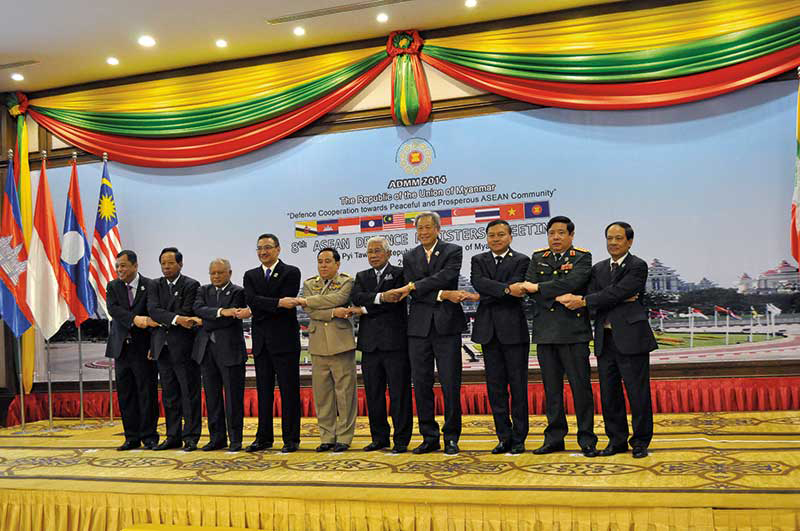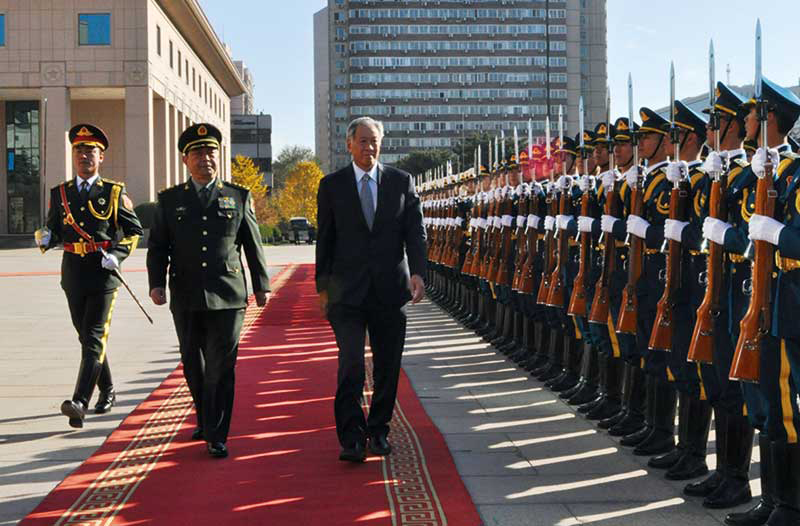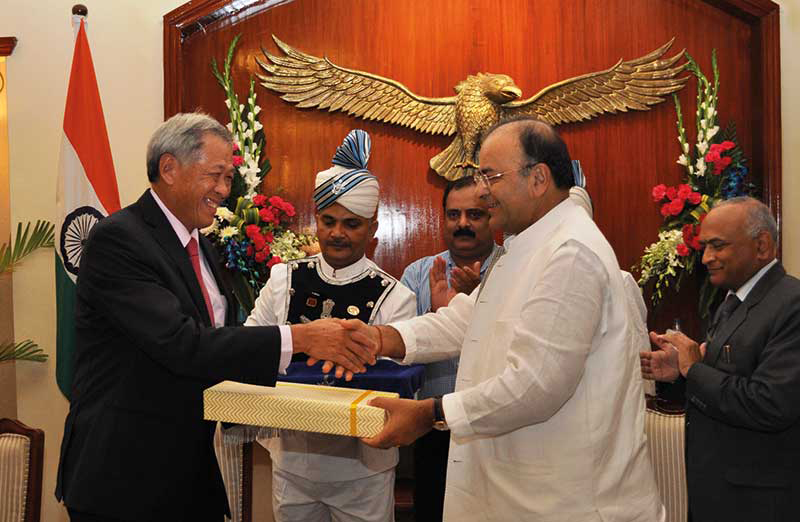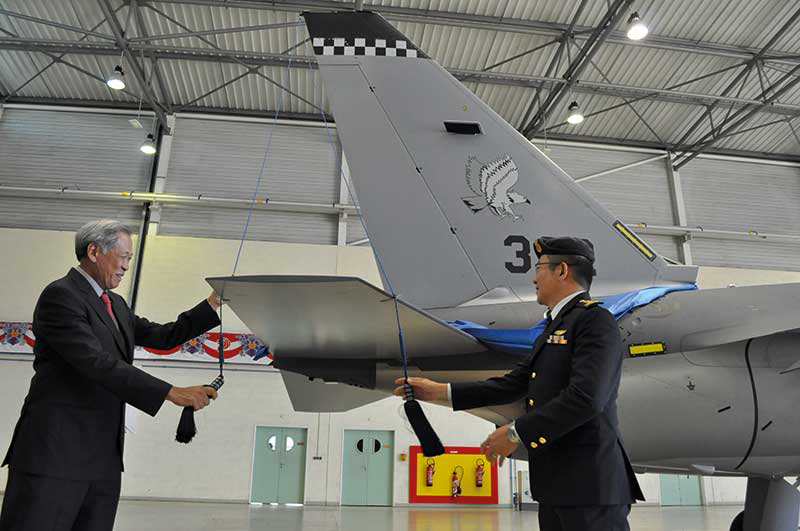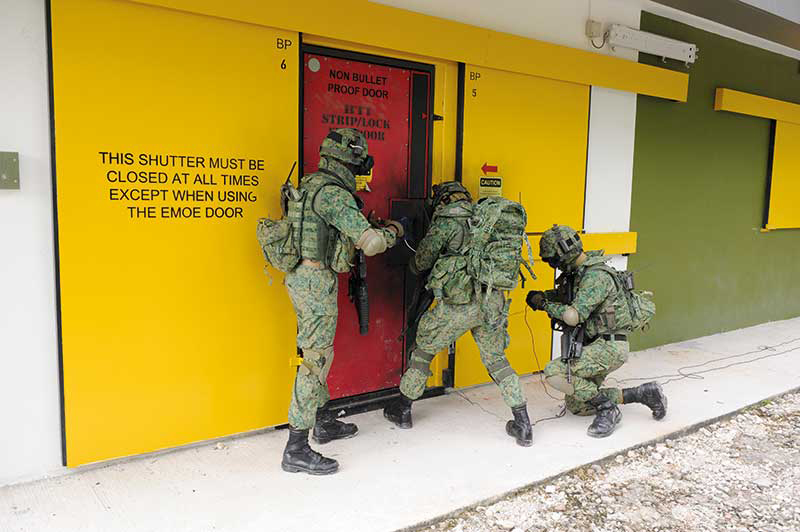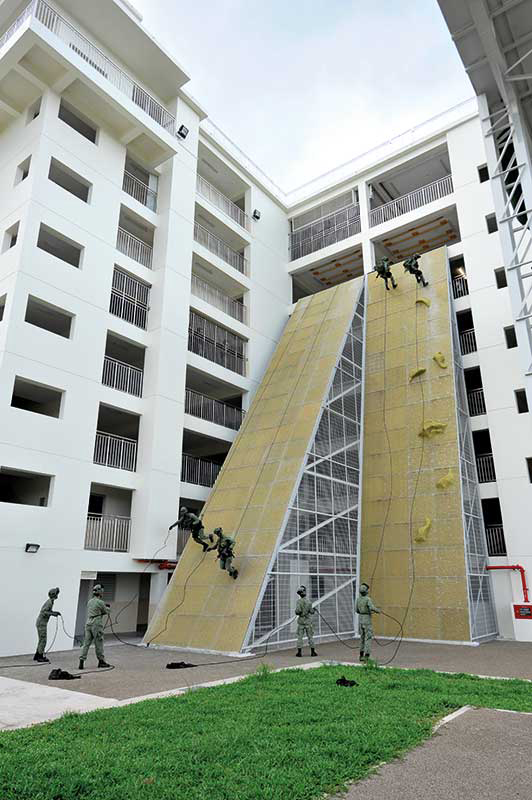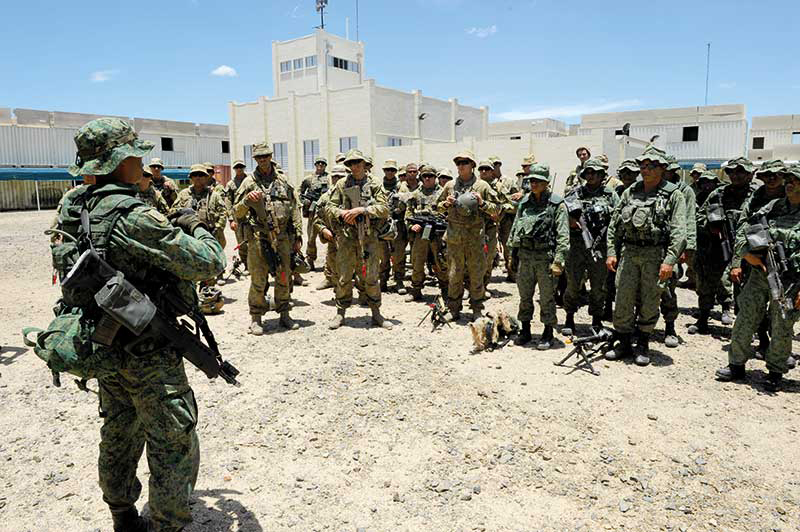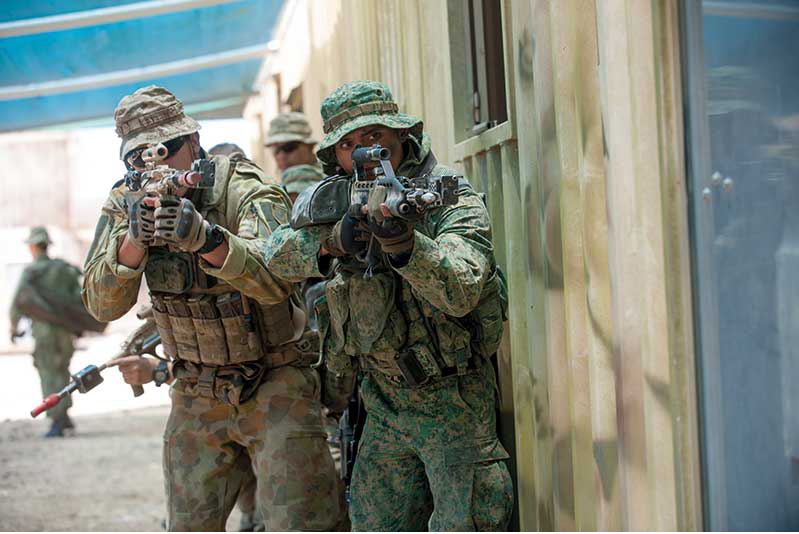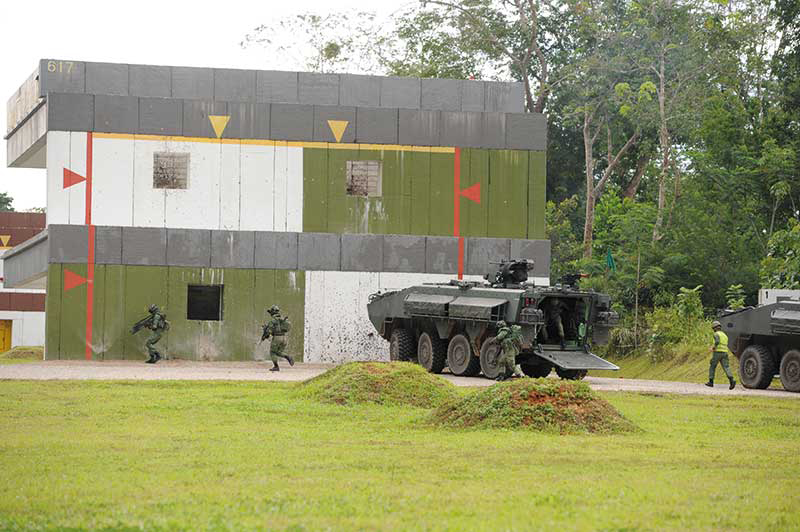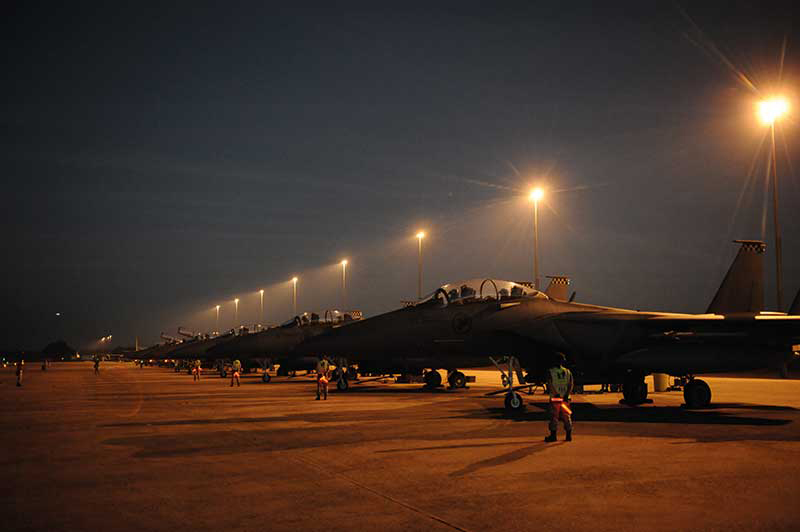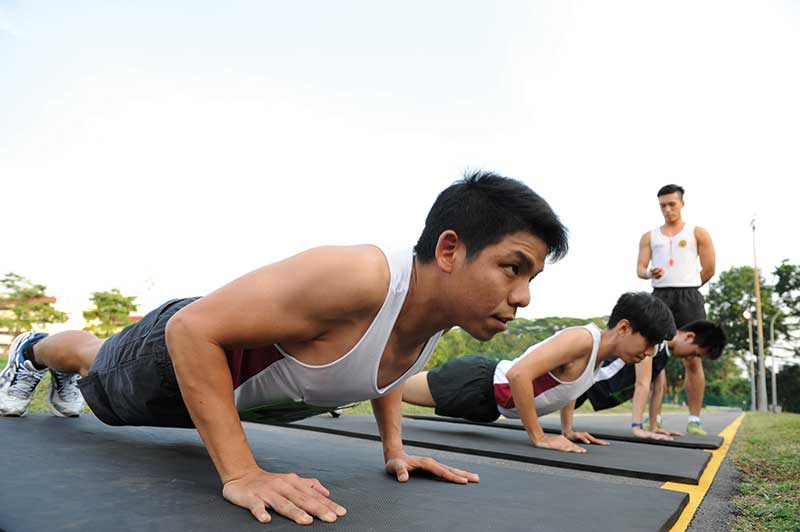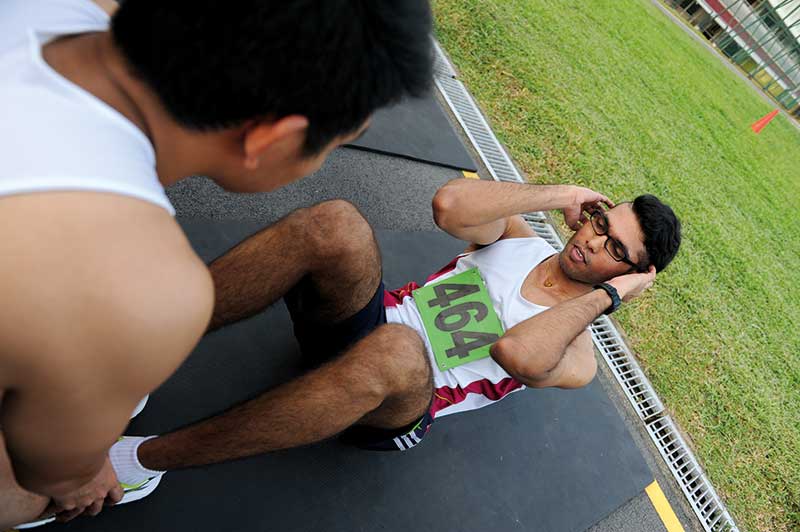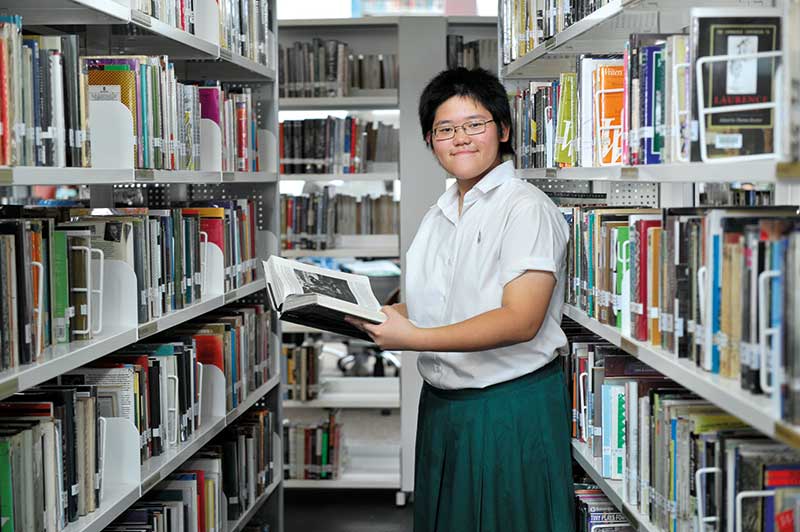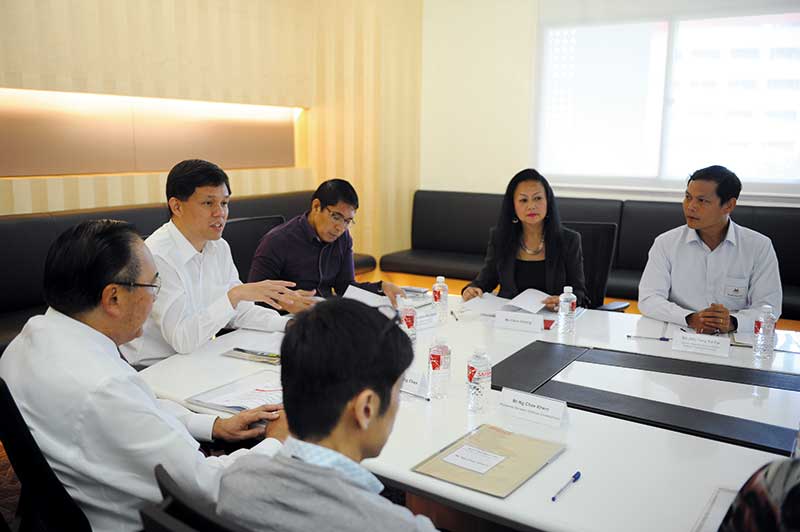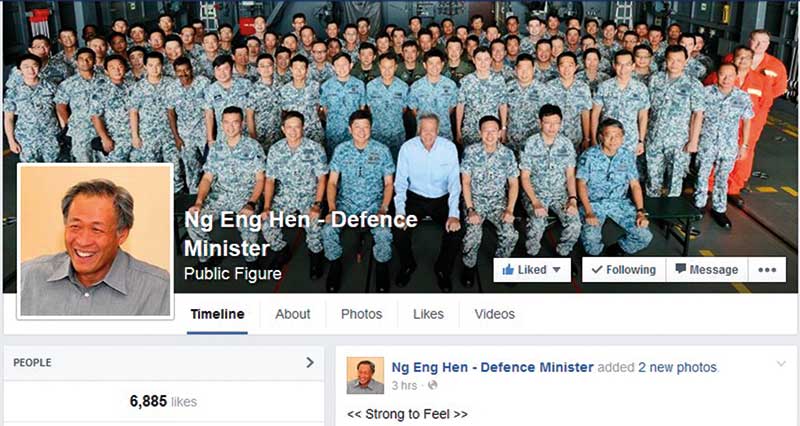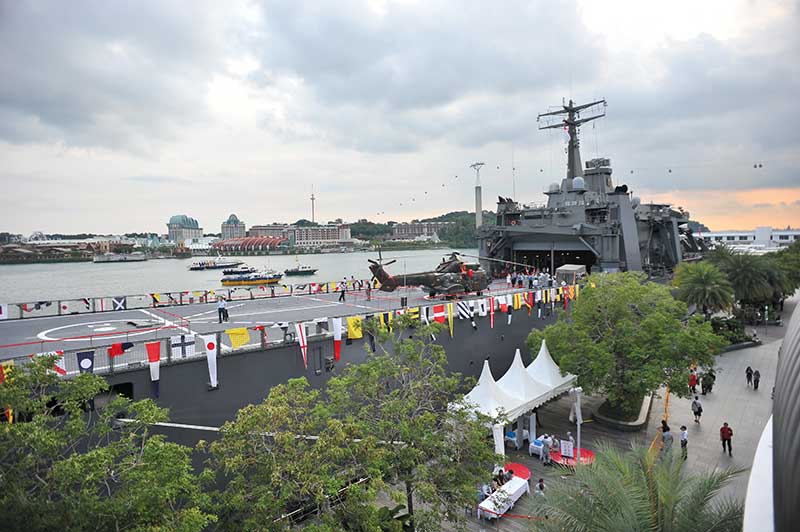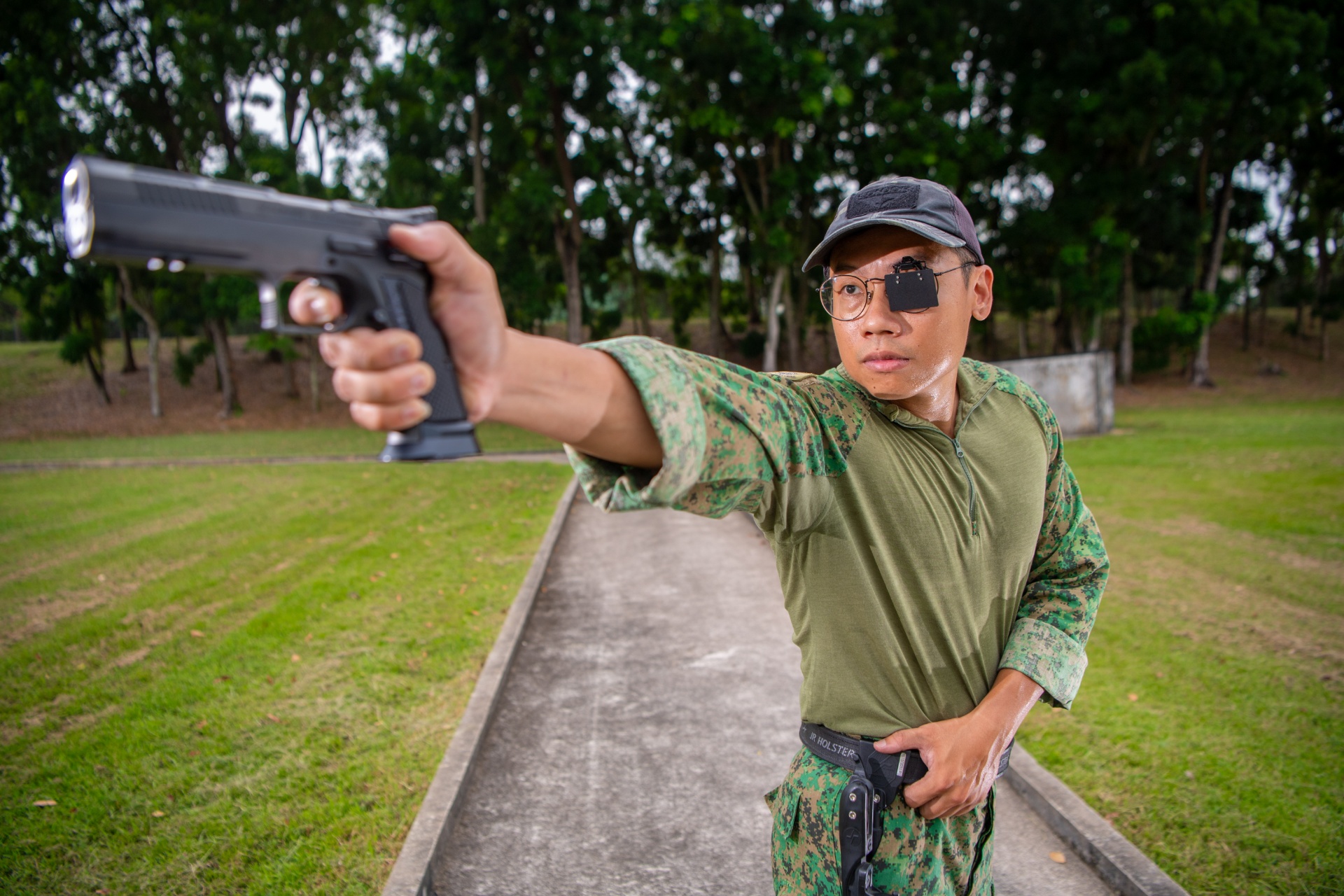TECHNOLOGY
A NATION'S SHIELD
02 Mar 2015
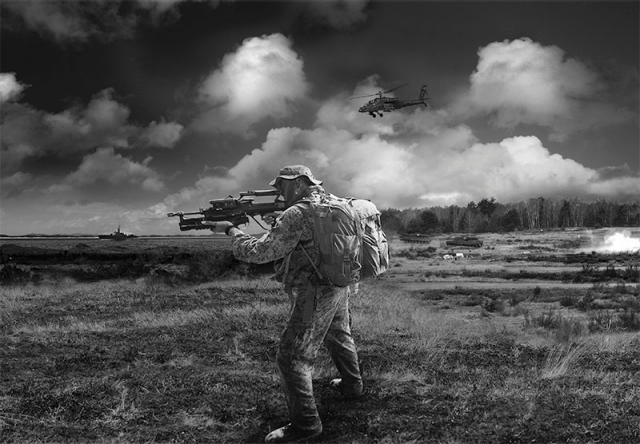

As the Singapore Armed Forces (SAF) celebrates its 50th birthday, here is a look at some of the things it has done over the past year in defending the nation.
In a reply to a Parliamentary Question last November on Singapore joining the multinational coalition to combat the Islamic State in Iraq and Syria (ISIS), Minister for Defence Dr Ng Eng Hen said: "Singapore must resolutely oppose the spread of terrorism in order to safeguard our security here. ISIS exports terrorism to our region, whether by sending foreign terrorists to carry out terrorist operations or by radicalising regional elements who engage in violence in Iraq, Syria and subsequently their home countries.
"If this terrorism threat is allowed to grow and spread, innocent civilians here and elsewhere could be endangered and killed. By contributing to the international effort to tackle the threat at source, we are contributing directly to our own security."
Following the announcement, the SAF has sent a liaison officer and a Needs Assessment and Survey Team to the United States (US) Central Command Headquarters to facilitate planning and coordination for the SAF. Planners will be further deployed to the Combined Joint Task Force Headquarters and the Combined Air Operations Centre. There are also preparations being made for the deployment of a KC-135R tanker aircraft to support air-to-air refuelling for coalition forces.
Today's ever-evolving security threats often transcend boundaries, and a small country like Singapore will always be at risk to attacks. Fifty golden years of peace is no small feat but after patting ourselves on the back for having done things right, we must look forward.
On 26 Jan, at the third International Institute for Strategic Studies Fullerton Forum: The Shangri-La Dialogue Sherpa Meeting, Dr Ng emphasised that we lived in an interdependent world and it was crucial to recognise that regional peace and stability depended on the collective will and efforts of nations to address security challenges facing the region.
Beyond building good defence relations, Singapore has also made significant headway internally in reaching out to our soldiers. Here's a look at how it has done both.
Diplomatic efforts & practical cooperation
Forging friendships
Singapore has a close and longstanding relationship with the US, and former US Secretary of Defence Chuck Hagel has consistently attended the annual Shangri-La Dialogue in Singapore. Singapore also supports the US' presence in the region, which is a critical force for peace and stablity, and recently facilitated the deployment of the US' Littoral Combat Ships to the region.
Both the SAF and the US Armed Forces undertake high-end training and exercises across all Services. Last November, both militaries took part in Exercise Daring Warrior, a bilateral air-land integrated live-firing exercise involving assets such as the Apache AH-64D helicopters and the High Mobility Artillery Rocket System.
2015 marks 25 years of Singapore's diplomatic relations with China, and in November last year, Dr Ng embarked on a seven-day trip to China, making stops in cities such as Nanjing, Qingdao and Beijing.
During the trip, both Dr Ng and General (GEN) Chang Wanquan, China's State Councillor and Minister of National Defence, reaffirmed the two countries' commitment to strengthening bilateral defence cooperation through a Four-Point Consensus. These included enhancing mutual understanding, trust and friendship through high-level strategic dialogues, interactions and exercises.
Exercise Cooperation, a joint training exercise between the People's Liberation Army and the Singapore Army, would be gradually expanded in subject, scope and frequency. Sea-wise, exchanges between the two navies would also be expanded to involve specialised fields and joint training.
This year also marks 50 years of Singapore's friendship with India. On 19 Aug 2014, Dr Ng made an official visit to New Delhi, where he met Indian Defence Minister Arun Jaitley. Both countries reaffirmed their defence relations and agreed that it was time to enhance their partnership.
Greater inter-military cooperation
With transnational threats such as terrorism and maritime and territorial disputes in the South and East China Seas, it is crucial that countries work together to mitigate them.
At the recent Shangri-La Dialogue Sherpa Meeting, Dr Ng called for increased cooperation among countries through existing platforms such as the Shangri-La Dialogue and ASEAN Defence Ministers' Meeting (ADMM)-Plus to enhance regional security.
"Such practical cooperation builds confidence and mutual understanding, which in turn help to prevent incidents (from) spiralling out of control because of miscalculations or misunderstandings on the ground," he explained.
Today, militaries often have to work together closely to tackle transnational security challenges. The SAF is no exception.
Some examples of what the SAF has done over the years include taking part in multinational counter-piracy efforts in the Gulf of Aden, the search for Malaysia Airlines flight MH370, the search for AirAsia flight QZ8501, and helping in Humanitarian Assistance and Disaster Relief (HADR) efforts after Typhoon Haiyan.
To enhance military-to-military coordination and responses in the wake of disasters, Singapore set up the Changi Regional HADR Coordination Centre (RHCC) on 12 Sep 2014. Said 2nd Minister for Defence Chan Chun Sing at the centre's opening: "The RHCC seeks to facilitate military-to-military coordination in disaster response, by supporting an Affected State's military in coordinating the foreign military assistance provided and liaising with disaster response stakeholders."
Despite being a small force, the SAF is known among other militaries for its capabilities, professionalism and trustworthiness. In an SAF Day interview last June, Chief of Defence Force Lieutenant-General Ng Chee Meng noted that whenever our military partners saw the SAF troops, "they know that the SAF is professional, they know the SAF can be trusted and they know that the SAF delivers".
Citing examples such as the SAF's swift assistance to other countries during disasters like the Aceh tsunami, Christchurch earthquake and Typhoon Haiyan, he added: "(From) demonstrations in different exercises...(to how) we get things done in operations, we have always contributed meaningfully. These are all testimonies (of how we've done well)...over a long period of time."
Lending a helping hand
Nearer to home, the devastating news of two aviation accidents - MH370 and QZ8501 - tugged at the heartstrings of all. The SAF spared no time in offering its help.
To search for MH370, the SAF deployed the C-130 Hercules transport aircraft in seven sorties, frigate RSS Steadfast with a Sikorsky S-70B Naval Helicopter on board, rescue vessel MV Swift Rescue with divers on board, Missile Corvette RSS Vigour as well as a Fokker-50 Maritime Patrol Aircraft.
For QZ8501, more than 400 personnel, two C-130s, two Super Puma helicopters, five Republic of Singapore Navy (RSN) ships and a six-man Autonomous Underwater Vehicle team were deployed to help in the search operations.
Commending the SAF's professionalism at the end of the operations, Dr Ng said: "They gave each task assigned their full effort and made a difference to the outcome of this mission. Singaporeans can take pride in how our SAF men and women conducted themselves and that we helped Indonesia, especially families of victims, find closure in this tragic accident."
Keeping our defence capabilities sharp
New & more effective training
With threats becoming more complex, the SAF launched three new training facilities to enhance soldiers' training.
The Republic of Singapore Air Force (RSAF) moved pilots' training up a notch with the Alenia Aermacchi M-346 advanced jet trainer. Inaugurated last September, the M-346 allows fighter pilot trainees to handle sophisticated systems early in their training and be better equipped for fighter operations.
On its capabilities, Commanding Officer 150 Squadron (SQN) Lieutenant Colonel (LTC) Kelvin Wan said: "The M-346 aircraft helps to enhance pilot training by introducing advanced combat skills at an earlier stage of training. Skills such as radar employment, Beyond-Visual-Range missile engagements and precision weapons delivery are all possible now with the M-346 aircraft."
On the ground, soldiers can now have more realistic live-firing training in an urban operations environment, thanks to the Murai Urban Live Firing Facility (MULFAC) launched last August.
With the capability to accommodate full urban operations for both light and motorised units, MULFAC allows troops to bring in support fires such as the Terrex Remote Control Weapon System and Matador.
A Platoon Commander from Headquarters Guards, Lieutenant (LTA) Laurent Huang explained that the use of support fires and live munitions would help troops gain more confidence.
"We want the troops to be confident in using explosives and not be shocked at the blast. Using grenades and explosives should be second nature to them," said the 25-year-old.
The final addition of the trio is the Airborne-trooper Training Facility (ATF). Launched last December, this indoor all-in-one facility lets soldiers hone their skills in basic airborne,
heli-rappelling insertion and heli-roping insertion anytime and regardless of the weather conditions.
Commenting that the ATF was a worthwhile investment, Dr Ng explained that it was important for the SAF's elite forces to have the confidence to respond to real-life situations.
"At the old facility, a lot of (the training) was broken up and it wasn't dynamic. But in this facility, everything is autonomous and you get as close to real-life situations as possible," he said.
"At the same time, trainers are able to break down the performance and give you your critique. So I would consider it a very significant improvement."
Expanding capabilities
Training aside, SAF servicemen have also been improving their combat proficiencies through overseas exercises.
For the first time in the Exercise Wallaby series, troops from both the SAF and the Australian Defence Force (ADF) joined forces to execute complex ground manoeuvres. Codenamed Trident, this component of Exercise Wallaby involved more than 800 personnel from the SAF and the ADF.
Commanding Officer of the Battalion Task Force for Exercise Trident LTC James Yin said that the key to operations like these was to train to such a level that it became second nature to the soldier.
"The more experienced the soldiers are, the less time they spend thinking about what's next. It becomes instinctive; you point your weapon in the right direction and the fighting team covers each other while advancing forward."
The Australian skies also saw the RSAF honing its air combat skills in Exercise Pitch Black 2014.
The multinational air war game featured a large number of aircraft being deployed in day and night operations, and included participants from countries such as the US and New Zealand.
It was a valuable learning experience for the airmen as they had to watch out for threats and make split-second decisions.
"We are fighting against so many more aircraft than I am used to in Singapore's air space. It took a while for me to get used to it, and build up my situational awareness in the air," explained LTA Lee Si Wei, an F-15SG Weapon Systems Officer (Fighter) from 149 SQN.
Out at sea, frigate RSS Intrepid marked a successful outing at the Rim of the Pacific (RIMPAC) exercise 2014 with the firing of an Aster Surface-to-Air Missile on 12 Jul 2014. The 22-day deployment also saw RSS Intrepid leading four other warships from the Chile, Norway and US navies in the exercise.
RIMPAC 2014 Task Force Commander and Commander Third Fleet, Vice-Admiral Kenneth Floyd from the US Navy commended the RSN's efforts: "I'm very impressed with the Singapore Navy…which brings leadership (to the exercise). The crew was also very capable from the bow to the stern."
Winning hearts
Reaching out to people
With servicemen making up the core of the SAF, the Ministry of Defence (MINDEF) has come up with several recommendations to improve the system and win hearts.
Following a year-long public engagement exercise, the Committee to Strengthen National Service's (CSNS') recommendations were accepted by the Government on 10 Jun 2014. One initiative was to see 90 percent of each NS cohort enlisted within four months of leaving school instead of the original eight.
The move was well received. Full-time national serviceman 2nd Sergeant Syaifullah Adli Abdullah, a trainer at the Basic Military Training Centre, explained: "While you're waiting (to enlist), it feels like your life is on hold. Enlisting earlier is also better for your future career - the faster you enlist, the faster you can enter the workforce."
Operationally Ready National Servicemen (NSmen) have also not been forgotten. The Individual Physical Proficiency Test (IPPT) has been simplified from five stations to a three-station test format, which includes sit-ups, the 2.4km and push-ups. This will be implemented from 1 Apr.
Speaking to local media on 23 Jul 2014 about the changes to IPPT, Chief of Army Major-General Perry Lim said: "We will introduce a simpler IPPT format with fewer stations so that our servicemen can train for IPPT on their own without the need for specialised equipment. Our NSmen can even adopt the new IPPT format for their routine exercise."
More options to serve
Another CSNS recommendation was the introduction of the SAF Volunteer Corps (SAFVC). This uniformed volunteer scheme allows non NS-liable Singaporeans and Permanent Residents (PRs) - such as women, first-generation PRs and new citizens - to contribute to the military.
Volunteers can choose from 17 roles across nine categories, which include ones like Airbase Civil Engineer, Doctor and Auxiliary Security Trooper (AST). The first batch of volunteers will commence training on 23 Mar.
Eighteen-year-old Teng Wenli, who applied for the roles of AST and in Naval Operations, explained her decision to join the SAFVC. "I believe that anyone can contribute to national defence, but I'm particularly attracted to the military because it requires a lot of sacrifice on the part of those who choose to uphold it."
The Raffles Institution Year 6 student added: "Not everyone can do it, but if I can, then I will. That my mother was a Staff Sergeant and worked in the Army for 11 years assures me that I, too, can play a role in defense."
Stronger engagement
During the CSNS discussions, one of the topics broached was to explore ways to better reach out to the public on defence matters. Thus, the Advisory Council on Community Relations in Defence (ACCORD) was expanded and restructured into three councils - the Family and Community (F&C) Council, the Employer and Business (E&B) Council and the Educational Institutions (EI) Council.
Chaired by Mr Chan, the restructured ACCORD will play an active role in engaging their respective stakeholders to strengthen commitment to defence as well as support for NS and Total Defence.
The E&B Council is co-chaired by Mr Chan and Mr Tony Chew, executive chairman of Asia Resource Corporation; the F&C Council is co-chaired by Minister of State for Defence Dr Mohamad Maliki Bin Osman and Ms Claire Chiang, Vice President of Banyan Tree Holdings Ltd; and the EI Council is co-chaired by Dr Maliki and Ms Indranee Rajah, Senior Minister of State for Law and Education.
On the social media front, Dr Ng set up his Defence Minister's Facebook page on 1 Jul 2014 to better connect with the public on defence-related matters. Dr Ng's regular posts and timely updates on the SAF's contributions in the search for AirAsia flight QZ8501 have garnered him a steady following of about 7,000 fans over the past eight months.
On a lighter note, Singaporean-driven initiatives such as Jack Neo's Ah Boys to Men movies have proven to be big hits that struck a chord with the public.
The latest instalment in the series, Ah Boys to Men 3: Frogmen, sheds light on the gruelling training of naval divers. Despite the movie's humorous moments, its message is clear - never take our defence for granted.
Giving strength
This year, Singapore celebrates her 50th anniversary and so does the SAF. Themed Our SAF : Giving Strength to Our Nation, a series of exciting activities will be held to celebrate the SAF's Golden Jubilee.
Celebrations kicked off with SAF50@Vivo, a large-scale tri-Service event held at VivoCity from 12 to 15 Feb. Besides getting up close to military hardware such as the Super Puma helicopter and going on board Landing Ship Tank (LST) RSS Endurance for ship visits, visitors had the chance to ride on a Fast Craft Utility launched from the well-dock of the LST.
Across the next few months, an interactive and experiential display called the SAF50 exhibition will travel to various locations across the island. The exhibition will showcase the real-life stories of the men and women who have contributed to Singapore's defence over the last 50 years. Other key events include the SAF Day celebrations in July and the National Day Parade.
With such festivities, there is no doubt that the SAF is going all out to make this the most memorable birthday celebration. But as we make merry, we must also remember how far we have come from that once defenceless island.
Dr Ng described it best at the Goh Keng Swee College and Staff Command graduation ceremony on 30 Oct last year: "We remember our early and difficult beginnings. It (2015) will be a time of thanksgiving, for the peace and prosperity we enjoy today and also a thanksgiving for the pioneers who made it possible.
"It will also be a time to look forward, to affirm what we must never give up and reflect on what we should change and adapt, for a better future."
(2015) will be a time of thanksgiving, for the peace and prosperity we enjoy today... (and) a time to look forward, to affirm what we must never give up and reflect on what we should change and adapt, for a better future.
- Dr Ng, on the need for the SAF to continue improving its capabilities
ALSO READ IN TECHNOLOGY
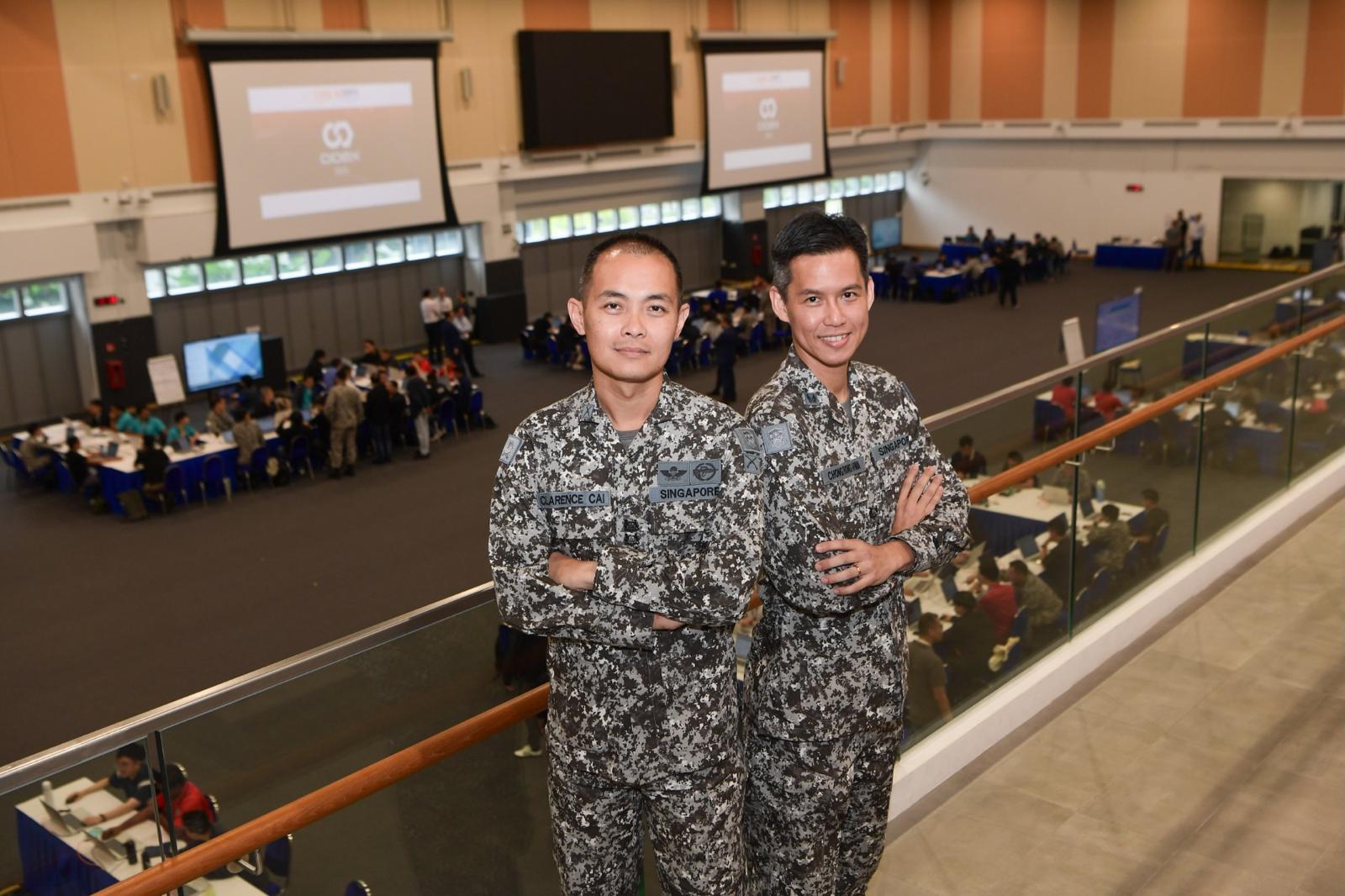
AI joins the fight in national cyber defence exercise
12 Nov 2025
AI and closer collaboration among agencies and industry are taking centre stage in this year’s Critical Infrastructure Defence Exercise (CIDeX).
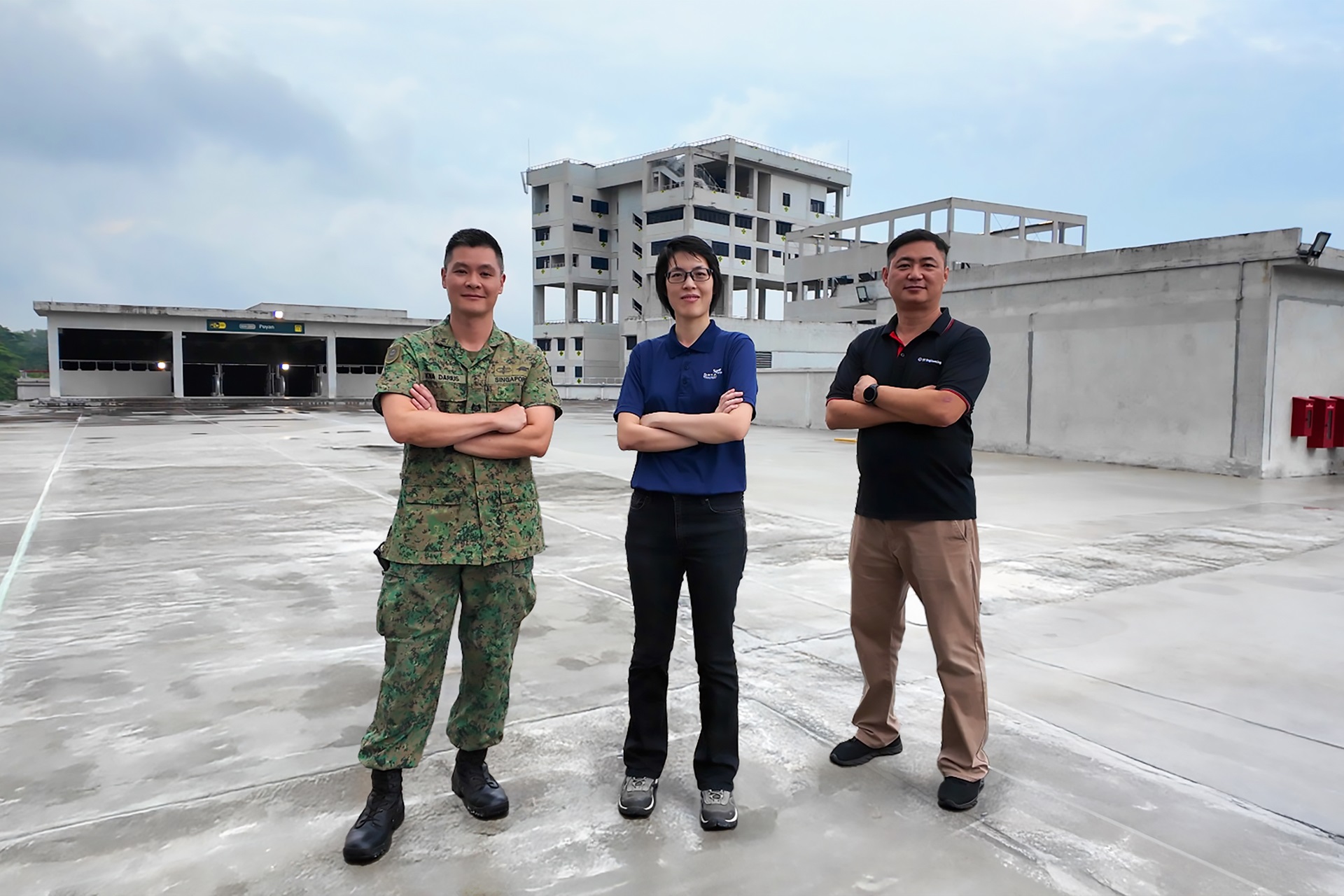
They built this city
01 Oct 2025
Turning vision to reality: the team behind SAFTI City clinches the Defence Technology Prize 2025 Team (Engineering) Award!
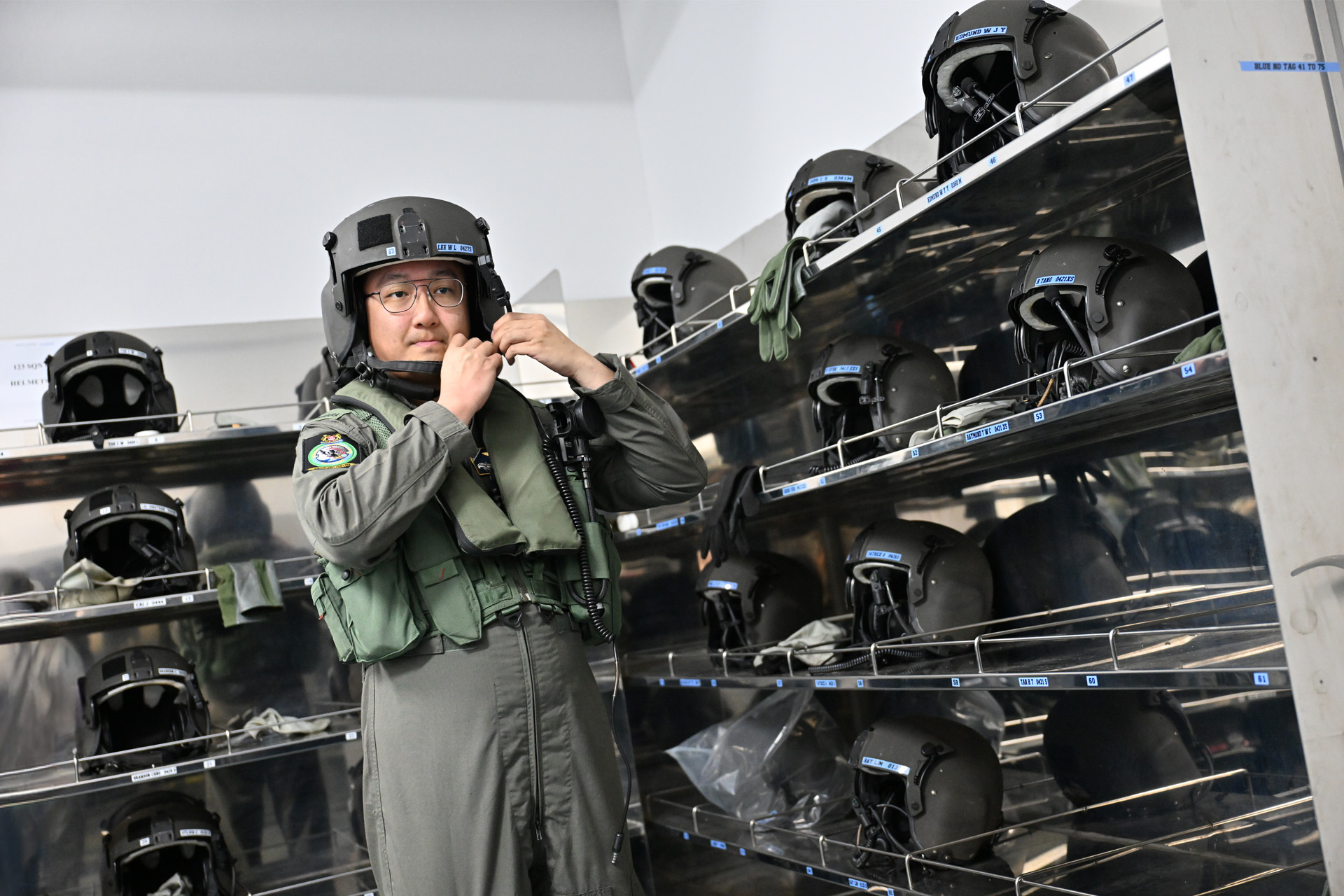
Operating over skies & seas
22 Aug 2025
This gear is designed to help a Sensor Supervisor survive emergencies in the air and at sea.



